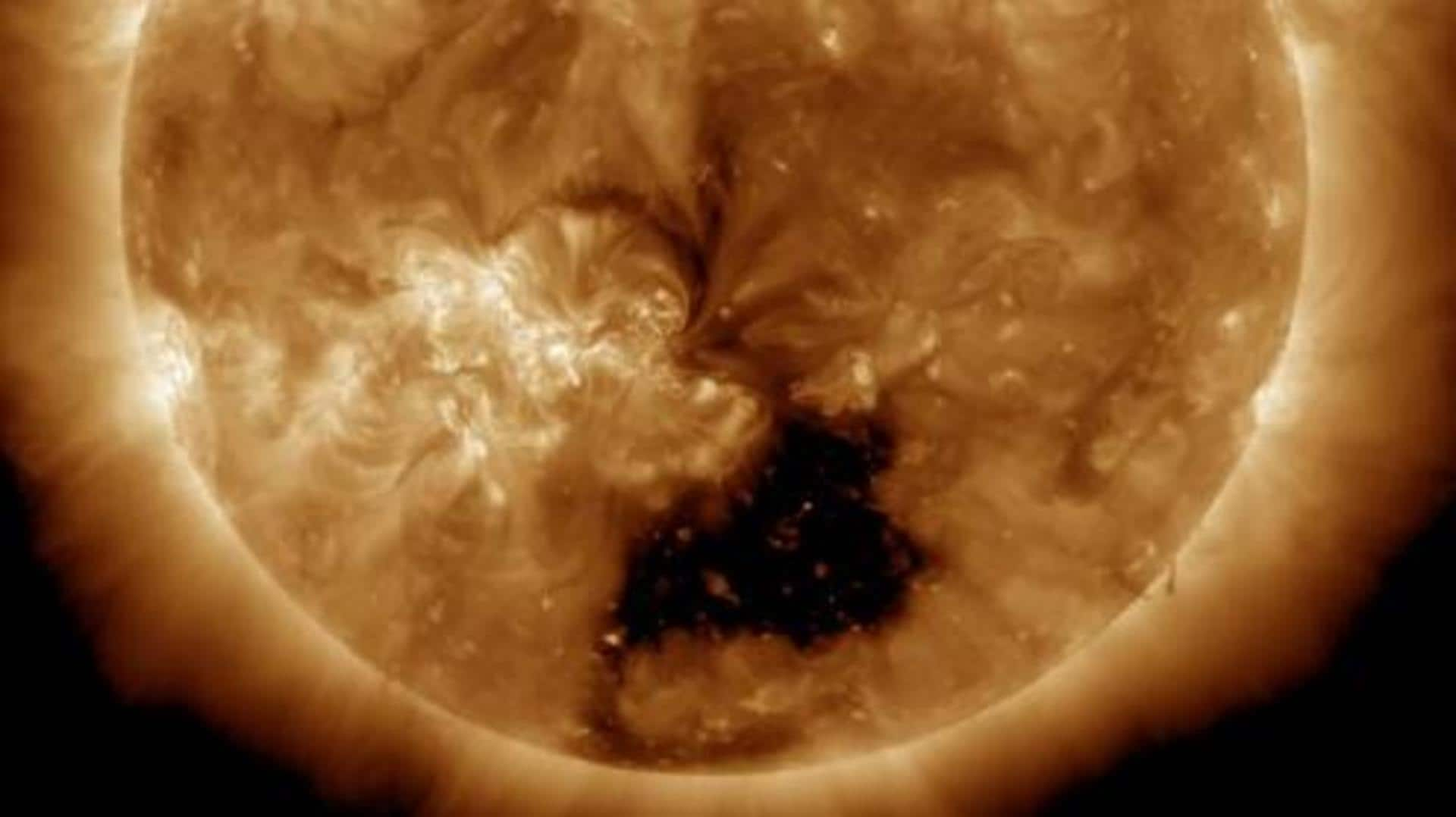
Massive hole, 30 times Earth's size, spotted on the Sun
What's the story
A massive hole, called the coronal hole, was spotted on the Sun by NASA's Solar Dynamics Observatory (SDO). The giant hole can fit about 20-30 Earths across. Coronal holes are not actual holes on the Sun's surface. They do not glow as brightly as their surroundings and appear dark on the solar surface because they are cooler than their surroundings.
Context
Why does this story matter?
The Sun is currently more active than it has been in the past decade as it is inching toward the peak of its current solar cycle, called solar maximum, which is expected to reach in 2025. As more sunspots appear on the Sun during this active period, it might lead to solar flares, which could interfere with communication systems and power grids.
Solar flares
Coronal holes are a part of the Sun's normal activity
Holes in the solar corona—the upper atmosphere of the Sun—are normal and are a part of the Sun's normal activity. However, they are not well understood and are termed the 'dark side' of solar activity. While powerful magnetic field explosions from the Sun like coronal mass ejections (CMEs) can cause electrical blackouts, coronal holes are far less dangerous.
Auroras
The coronal hole will cause auroras on March 24
Coronal holes allow an increased flow of the charged-particle streams, called the solar wind, which can reach speeds of about 500-800 kilometers per second. The recently-spotted coronal hole will spark auroras in the higher altitudes on Earth on March 24, reports National Oceanic and Atmospheric Administration (NOAA). Previously, such coronal holes have led to auroral displays in New York and Idaho.
Official words
The coronal hole is could spark auroras on March 24
"We will probably start seeing the effects of the high-speed wind on March 24," said Scott McIntosh, deputy director of the National Center for Atmospheric Research, to Business Insider. "When the high-speed wind reaches Earth, the particles and the magnetic field it carries will interact with Earth's magnetic field, effectively rattling it or like ringing a bell," explained McIntosh.
Sun
Most solar activity is harmless
Recently, SDO spotted a huge "tornado" sweeping across the Sun's north pole. Boiling plasma rose high above the Sun's surface, reaching a height of about 120,000 kilometers on March 18. Fortunately, when the tornado settled down, the ejected material did not fly toward Earth. Most solar activity is harmless, but to be on the safer side, NASA and other organizations closely monitor the Sun.